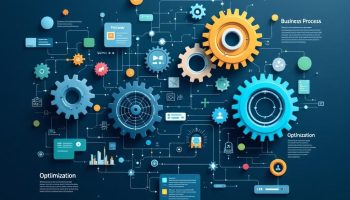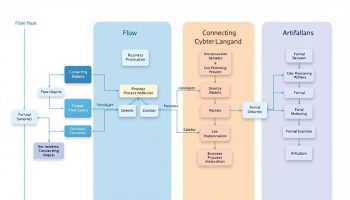
What Are Successful Employee Engagement Strategies
Successful employee engagement strategies include powerful tactics that build workplace connection and boost productivity. These approaches create environments where staff feel valued, heard, and motivated to deliver their best work. From digital onboarding to personalized recognition programs and flexible participation options, these strategies address modern workforce needs while driving organizational success.
Why Businesses Need Robust Employee Engagement Strategies
Successful employee engagement strategies directly impact your company’s performance by meeting today’s workforce expectations. Companies implementing effective tactics see clear improvements in retention, productivity, and innovation. Research shows engaged employees drive 21% higher profitability compared to disengaged teams.
Digital approaches and AI systems help scale personalized experiences while collecting valuable insights for strategic decisions. In competitive job markets, organizations that don’t prioritize engagement risk losing top talent to competitors offering more fulfilling work environments.
Engaged staff also become authentic brand ambassadors who enhance customer experiences. Their genuine enthusiasm strengthens your market position and creates positive impressions that extend beyond workplace walls.
6 Successful Employee Engagement Strategies: Unlocking the Key to a Thriving Workplace
In today’s competitive landscape, organizations must prioritize employee engagement to foster a thriving and productive environment. Leveraging successful employee engagement strategies is essential for enhancing morale, improving retention, and driving overall organizational performance. This section highlights seven innovative approaches that can transform your workplace culture and create a sense of belonging among employees.
From a digital-first onboarding experience to personalized engagement pathways, these strategies emphasize leveraging technology and understanding individual motivations. Implementing these strategies can help build meaningful connections within your team, ensuring everyone feels valued and motivated to contribute to shared goals. Explore each strategy below to discover actionable insights and expert recommendations that will elevate your employee engagement initiatives.
1. Digital-First Onboarding Experience
Implementing successful employee engagement strategies begins from day one with a digital-first onboarding approach. The modern workplace demands innovative solutions that engage new hires immediately. Virtual reality office tours provide an immersive introduction to your workspace, allowing remote employees to feel connected before they even start.
Interactive culture modules represent another pillar of digital onboarding that reinforces your company values and builds engagement from the beginning. These modules can include:
- Company history and mission challenges
- Team introduction videos
- Values-based scenario training
- Cultural norms and expectations
The automated documentation process streamlines paperwork completion, reducing administrative burden while improving implementation efficiency of your engagement strategy. This technology-forward approach allows HR teams to focus on meaningful connection rather than paperwork.
A peer mentor matching system completes the digital onboarding experience by connecting new hires with experienced team members who can guide them through their first months. This relationship-building component is crucial for successful employee engagement strategies that foster belonging and purpose from day one.
Expert Insight: To enhance employee engagement from day one, adopt a digital-first onboarding approach that includes virtual reality office tours and interactive culture modules. Streamline documentation to minimize administrative tasks, allowing HR to focus on meaningful connections. Pair new hires with peer mentors to foster belonging and purpose from the start.
2. Values-Based Recognition Program
Implementing successful employee engagement strategies requires a thoughtful approach to recognition. A values-based recognition program aligns appreciation efforts with your organization’s core principles, reinforcing desired behaviors while boosting morale.
Digital badges serve as visible symbols of value alignment, allowing employees to showcase their achievements on internal profiles and professional networks. These digital credentials create a sense of accomplishment when employees demonstrate behaviors that embody company values.
A real-time recognition platform enables immediate acknowledgment of contributions, which is crucial for maintaining engagement momentum. This technology allows both managers and peers to communicate appreciation effectively when values are exhibited in daily work.
Monthly value champion spotlights highlight exceptional examples of employees living your organizational values. Consider featuring these champions through:
- Company-wide email announcements
- Intranet profile features
- Recognition during team meetings
- Small rewards or experiences
Values-driven performance metrics complete the program by incorporating value alignment into formal evaluations, ensuring that living your company’s principles becomes part of how performance is measured and rewarded.
Expert Insight: Establish a values-based recognition program to boost employee engagement and morale by aligning recognition with core principles. Utilize digital badges for visibility and a real-time platform for immediate acknowledgment. Highlight monthly value champions to reinforce desired behaviors and integrate values into performance metrics for comprehensive evaluation.
3. AI-Powered Feedback System
Implementing successful employee engagement strategies requires modern feedback mechanisms. AI-powered systems transform how you collect and analyze employee sentiment, creating more responsive organizations. These technologies enable continuous feedback rather than annual reviews.
Anonymous pulse surveys form the backbone of these systems, allowing employees to share honest opinions without fear of repercussion. Many organizations find these short, frequent check-ins yield more actionable insights than traditional surveys.
Sentiment analysis tools examine communication patterns across:
- Email and messaging platforms
- Project management tools
- Internal social networks
- Document collaboration systems
These tools help identify engagement trends before they become issues requiring intervention. The 360-degree feedback automation streamlines collecting input from peers, managers, and direct reports, making comprehensive engagement management accessible.
Personalized improvement suggestions provide targeted development opportunities based on individual feedback patterns. Unlike generic training, these AI-driven recommendations address specific areas where employees can grow, creating more meaningful professional development experiences.
Expert Insight: Leverage AI-powered feedback systems to transform employee engagement strategies by facilitating continuous, anonymous feedback through pulse surveys. Utilize sentiment analysis tools to preemptively identify engagement trends and automate 360-degree feedback for comprehensive insights. Deliver personalized development suggestions that target areas for growth, enhancing professional development experiences.
4. Collaborative Goal Architecture for Successful Employee Engagement
Implementing successful employee engagement strategies requires a structured approach to goal setting and tracking. Collaborative Goal Architecture creates a framework where team members align their efforts toward common objectives.
OKR tracking software forms the backbone of this strategy, enabling real-time monitoring of progress toward key results. These digital tools make successful employee engagement strategies more measurable by providing transparency and accountability. When selecting OKR software, prioritize platforms with intuitive interfaces and integration capabilities.
Team goal visualization boards transform abstract objectives into tangible targets that employees can rally behind. These visual representations help in:
- Clarifying priorities and dependencies
- Highlighting individual contributions to team success
- Creating a sense of shared purpose
- Maintaining focus on strategic objectives
Cross-functional objective alignment is essential for effective project collaboration across departments. When teams understand how their goals interconnect, silos break down and collaboration flourishes. Regular alignment meetings keep everyone synchronized.
Progress celebration milestones acknowledge achievements and reinforce positive behaviors. These structured celebrations should be built into your engagement calendar, recognizing both team and individual contributions to maintain momentum and motivation.
Expert Insight: Implement Collaborative Goal Architecture to enhance employee engagement by aligning team efforts around shared objectives. Use intuitive OKR tracking software for transparency and accountability, and utilize goal visualization boards to clarify priorities. Regular alignment meetings and progress celebrations will motivate teams and reinforce their contributions toward collective success.
5. Personalized Engagement Pathways
Implementing successful employee engagement strategies requires recognizing that each team member has unique motivations and learning preferences. Personalized engagement pathways create tailored experiences that boost productivity and satisfaction.
Learning style assessments form the foundation of these personalized approaches. By identifying whether employees are visual, auditory, or kinesthetic learners, you can deliver information in formats that resonate most effectively with them. This targeted approach ensures better knowledge retention and application.
Custom development tracks allow employees to progress along career paths that align with both organizational needs and personal aspirations. These individualized journeys make employees feel valued and invested in, which is crucial for long-term engagement.
Consider implementing these personalized elements:
- Role-specific engagement metrics that measure what matters most for each position
- Individual wellness programs that address physical, mental and financial wellbeing
- Personalized learning paths that adapt to changing career interests
- Tailored communication channels based on preference
Individually-based performance reviews complement these pathways by providing targeted feedback that acknowledges each employee’s unique contributions and growth areas.
6. Flexible Participation Framework
Implementing successful employee engagement strategies requires adaptability in how team members participate. Mobile-first engagement tools form the foundation of a flexible system, allowing employees to connect and contribute from anywhere. These tools integrate seamlessly with your existing platforms while providing accessibility across devices.
Asynchronous communication options have become essential for modern workplaces. By providing these channels, you enable team members to engage meaningfully without requiring simultaneous availability. Consider implementing:
- Dedicated message boards for ongoing discussions
- Video messaging platforms for complex communications
- Collaborative documents with commenting capabilities
- Idea submission portals that remain open continuously
Multi-channel feedback options ensure all voices are heard regardless of communication preferences. Some employees may feel more comfortable sharing insights through active listening sessions, while others prefer written formats or anonymous submissions.
Customizable schedule options respect different working styles and personal commitments. When designing your engagement framework, build in flexibility for participation timing, allowing employees to engage during their most productive hours while maintaining effective project collaboration across time zones.
Successful Employee Engagement Strategies
Successful employee engagement strategies, including digital-first onboarding, values-based recognition, AI-powered feedback systems, collaborative goal architecture, personalized engagement pathways, and flexible participation frameworks, are transforming how organizations connect with their workforce in 2025. These innovative approaches leverage technology and human-centered design to create meaningful experiences that foster belonging, purpose, and productivity throughout the employee lifecycle.
The Importance of Employee Engagement
Implementing successful employee engagement strategies is essential for businesses seeking to maintain a competitive advantage in an increasingly dynamic talent marketplace. These six powerful tactics—digital-first onboarding, values-based recognition programs, AI-powered feedback systems, collaborative goal architectures, personalized engagement pathways, and flexible participation frameworks—directly impact critical business outcomes including:
- Talent retention
- Productivity enhancement
- Innovation capacity
- Operational resilience
While simultaneously reducing costly turnover and creating the positive workplace culture necessary for sustainable growth.






